Creative flowers at home | Blog Post
While the hotel is closed and the gardens at Another Place, The Lake empty, they are far from silent. The explosion of colour from spring flowers is literally buzzing with bees and insects; the birdsong ringing out through the trees. Our florist, Laura Tuer, visited the gardens to collect some flowers to make some easy arrangements that you can try at home.
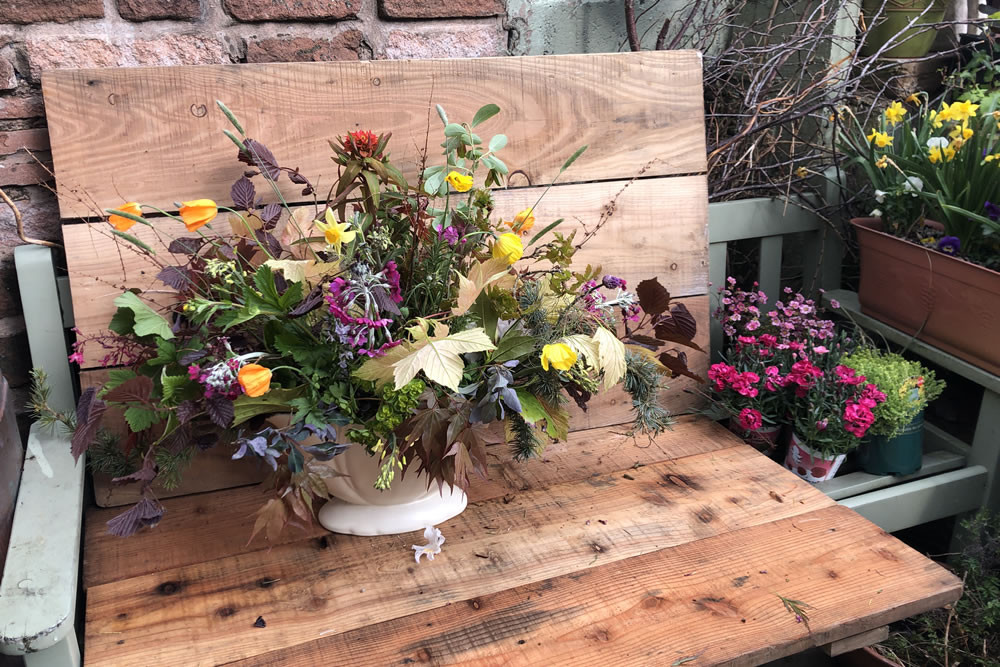
All the flowers and foliage I have used were collected from the gardens at Another Place in early May. Up here in Cumbria our gardens are a few weeks behind the South, so things may be further out if you are in a different part of the country.
When using garden or foraged flowers there is new growth on the stems at the moment. So before you use them they’ll need ‘conditioning’ – this means removing leaves and flowers from the lower half of the stem and leaving them in cold water (around 1/3rd bucket full) in a cool place for at least a few hours. When they’ve had a good drink recut the stems (sharp scissors or secateurs) at an angle and they are ready to use.
I have done three designs that you can have a go at yourselves, with items you may have at home – or might find nearby.
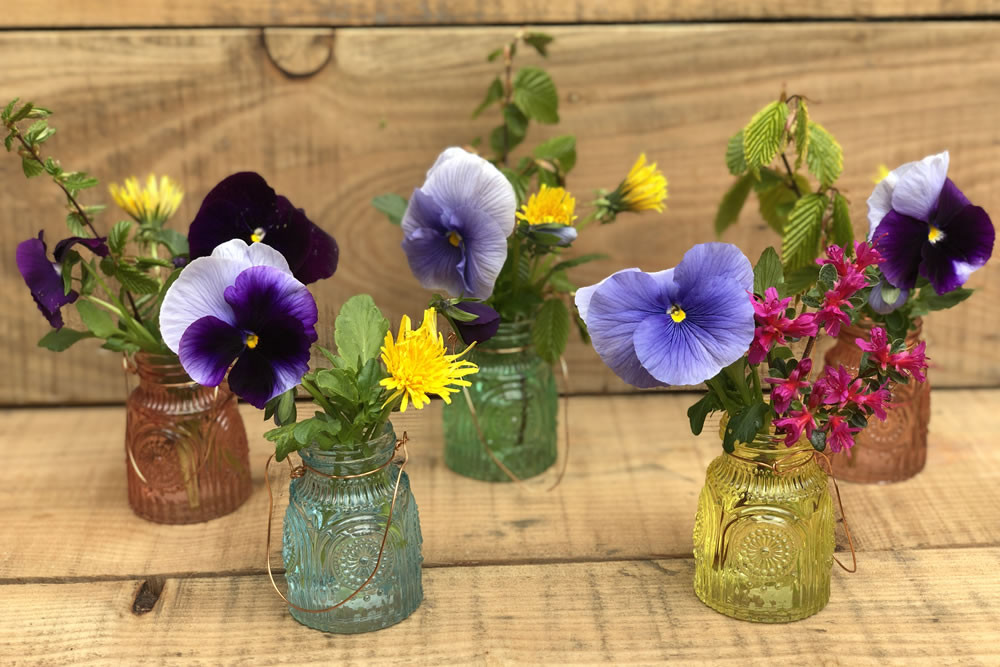
Small and beautiful
This first design is very simple, using small glass bud vases (alternatively, small milk jugs or old medicine bottles work well). I used pansies that are in the big planters at the front of the hotel, dandelions (everywhere at this time of year!) and small hazel stems. They look very pretty for a side table or small window sill.

Reaching higher
The second uses some spare milk bottles from our local milkman delivery (or you can use gin bottles, if you happen to have any lying around!) I used taller stemmed flowers and foliage such as poppies, acer leaves, Timothy grass, creeping geranium, chive flowers, celandine and rosemary. Cow parsley that’s in flower in the hedgerows now would also be lovely in these.
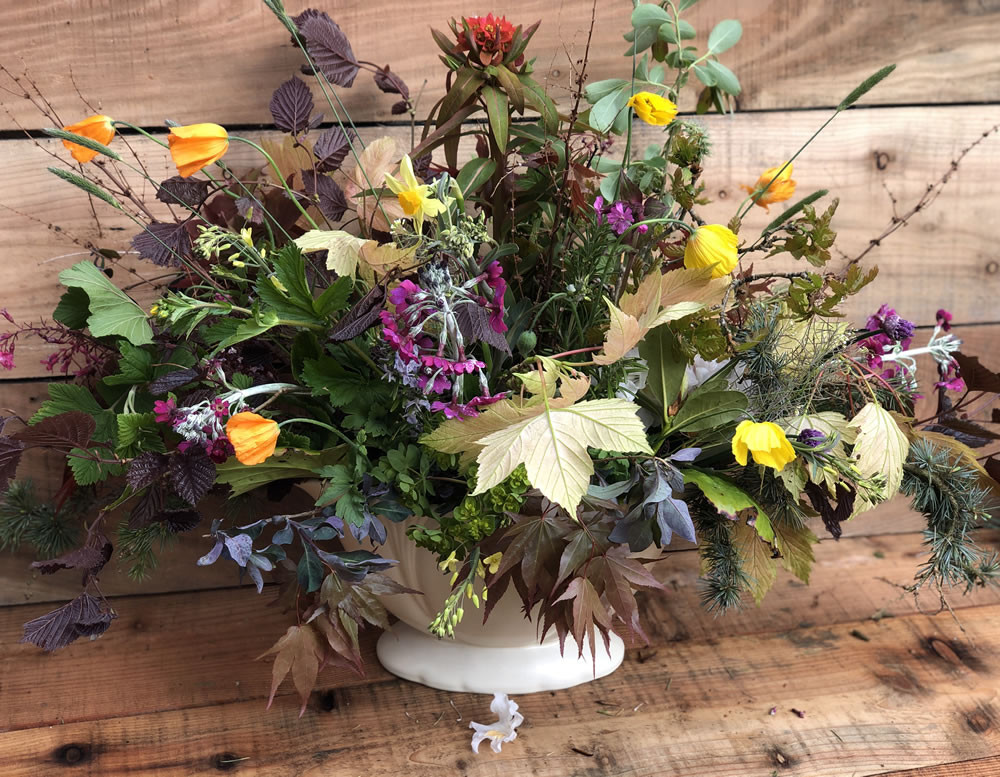
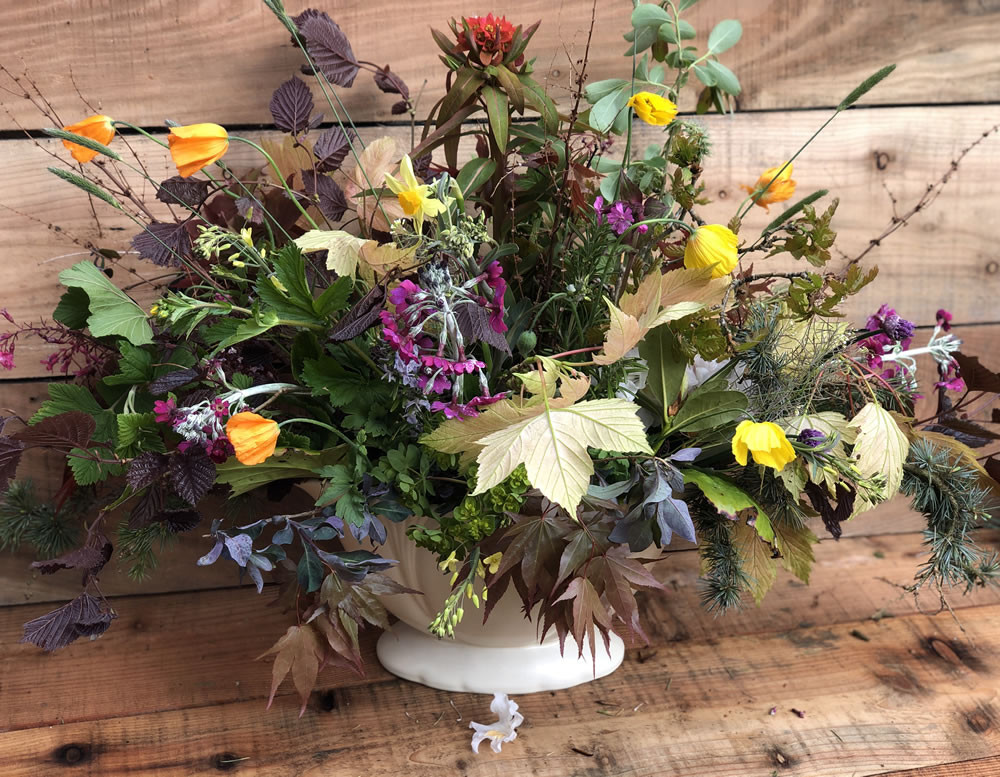
Full bloom
The third design uses a ceramic vase from a charity shop (a watertight deepish bowl would be a good alternative). I’ve scrunched up some chicken wire to give support to the stems, but you can also use a grid of sticky tape across the top of the bowl if you haven’t got any chicken wire, with some pebbles in the bottom for support.
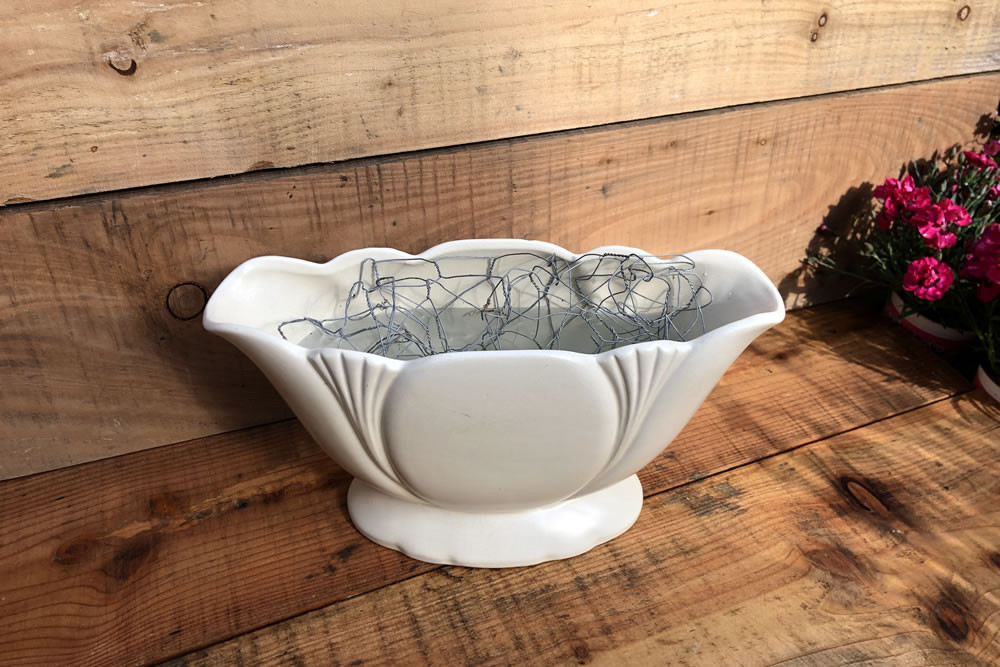
The vase is filled at least 3/4 full with cold water, you can then start adding the foliage to give the shape and a structure and base for the flowers. Try to work to around 1.5 times the height of the vase.
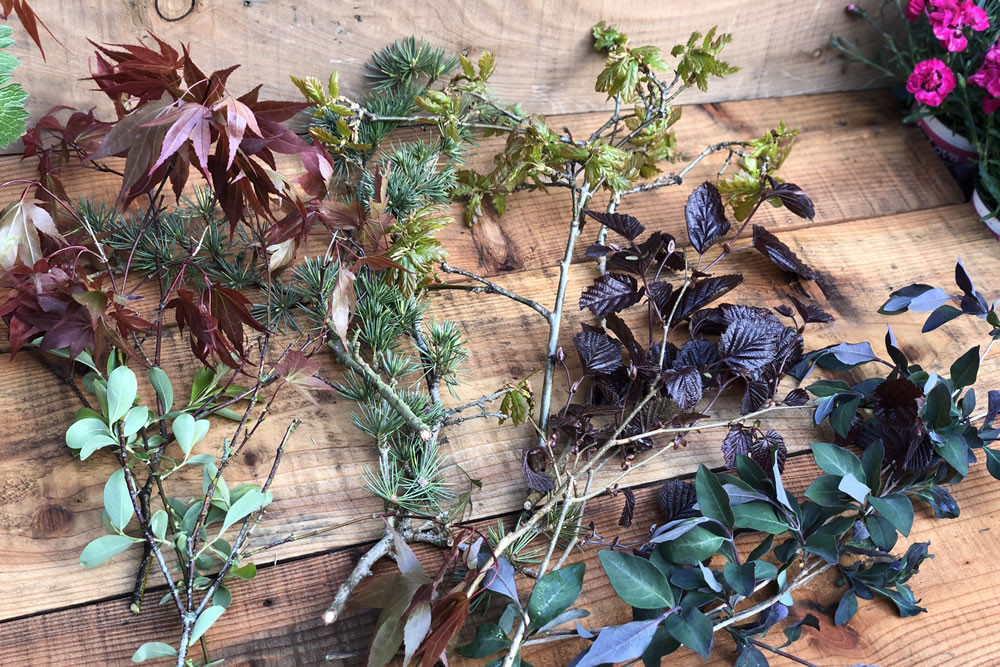
The foliage I used here was honeysuckle, acer leaves, oak, willow, larch, rosemary and grasses.
I then added some larger leaves of begenia and sycamore for focal areas. Finally, I worked in the flowers throughout, with the larger blooms in the middle of the design for balance. I used poppy, primula, euphorbia, flowering currant, daffodils and even flowers from cabbage that had gone to seed.
Take your time to create a design. You can take stems out and move them around, and remember not to cut stems too short the first time as you can make them shorter but not longer once they’re cut!
Whichever one you’ve created, display it in a coolish place, out of direct sunlight, and top up or change the water every few days.
Have fun!
Laura, Greenwheat Flowers
Share your creations on Instagram and Facebook using #anotherplaceflowers #greenwheat
Read our interview with Laura to discover more about Greenwheat and her take on flowers and fika.